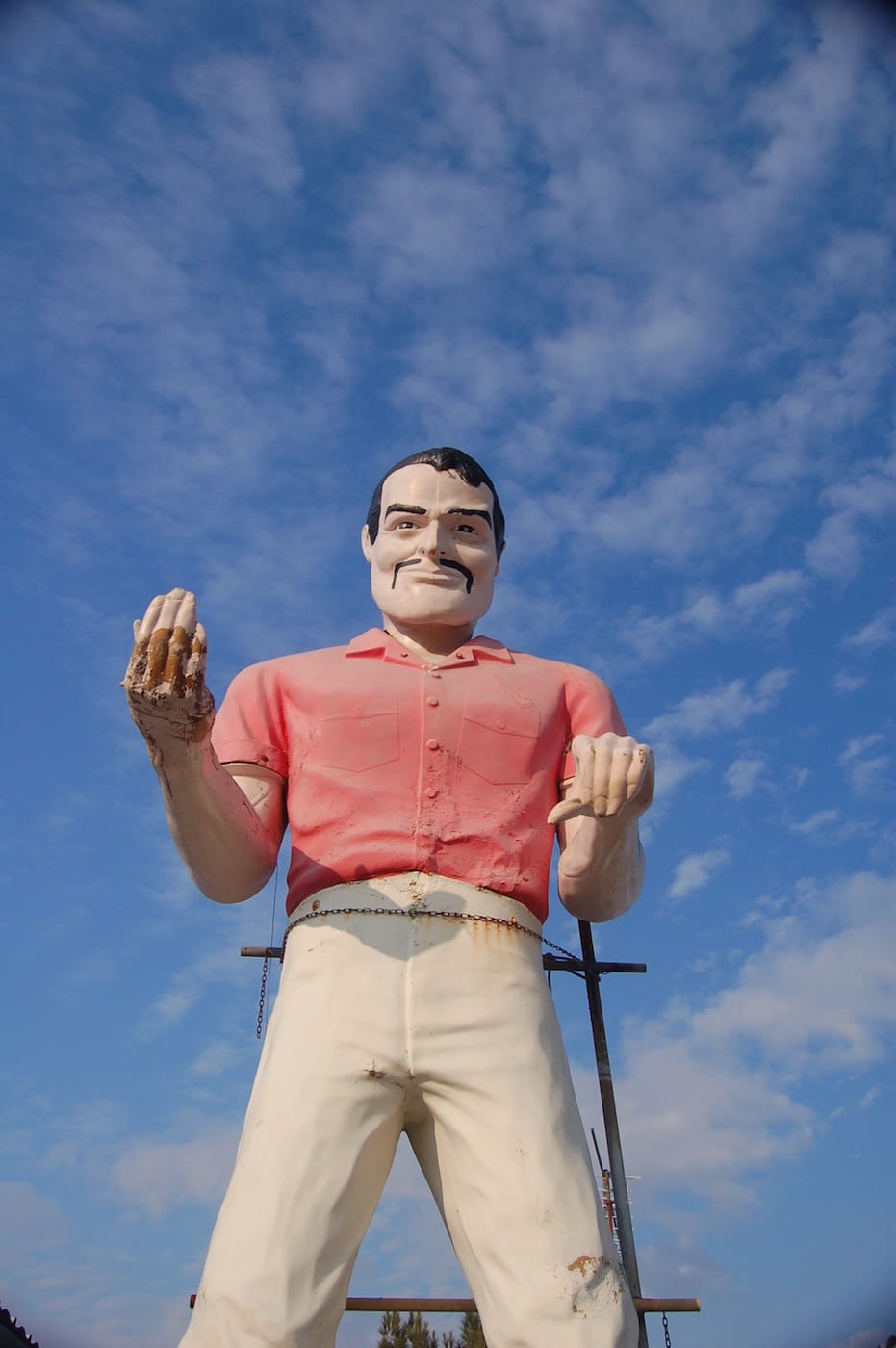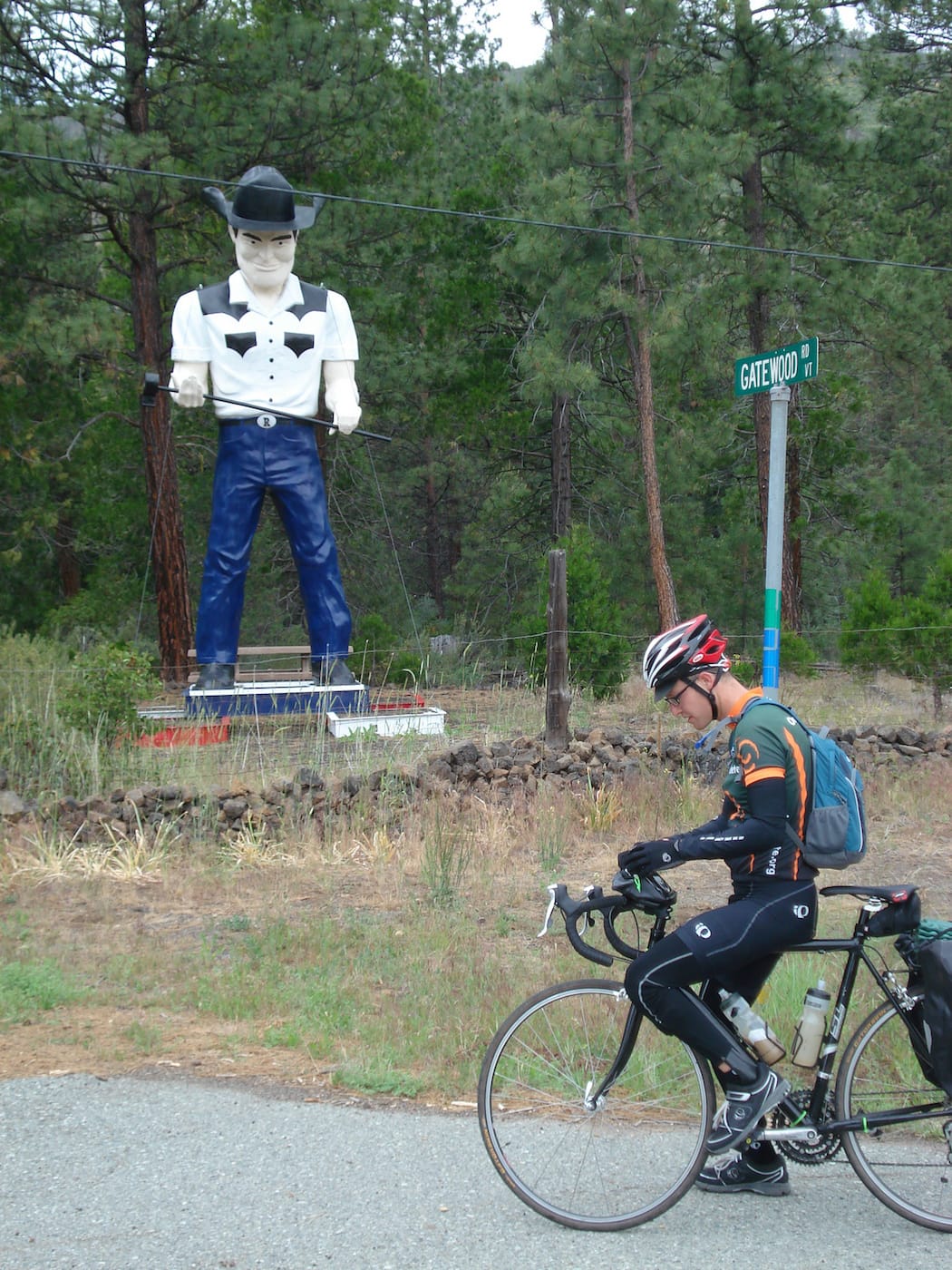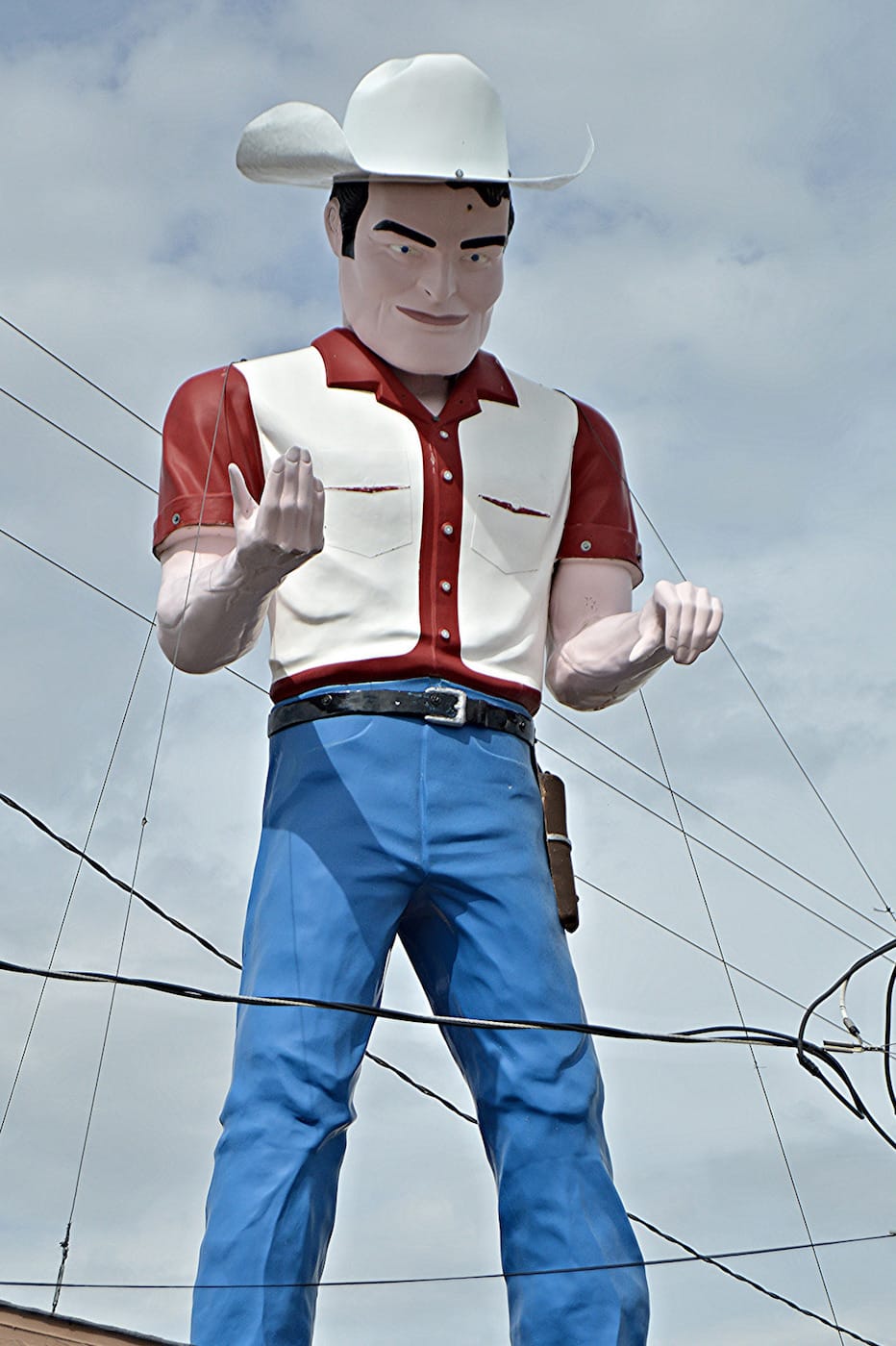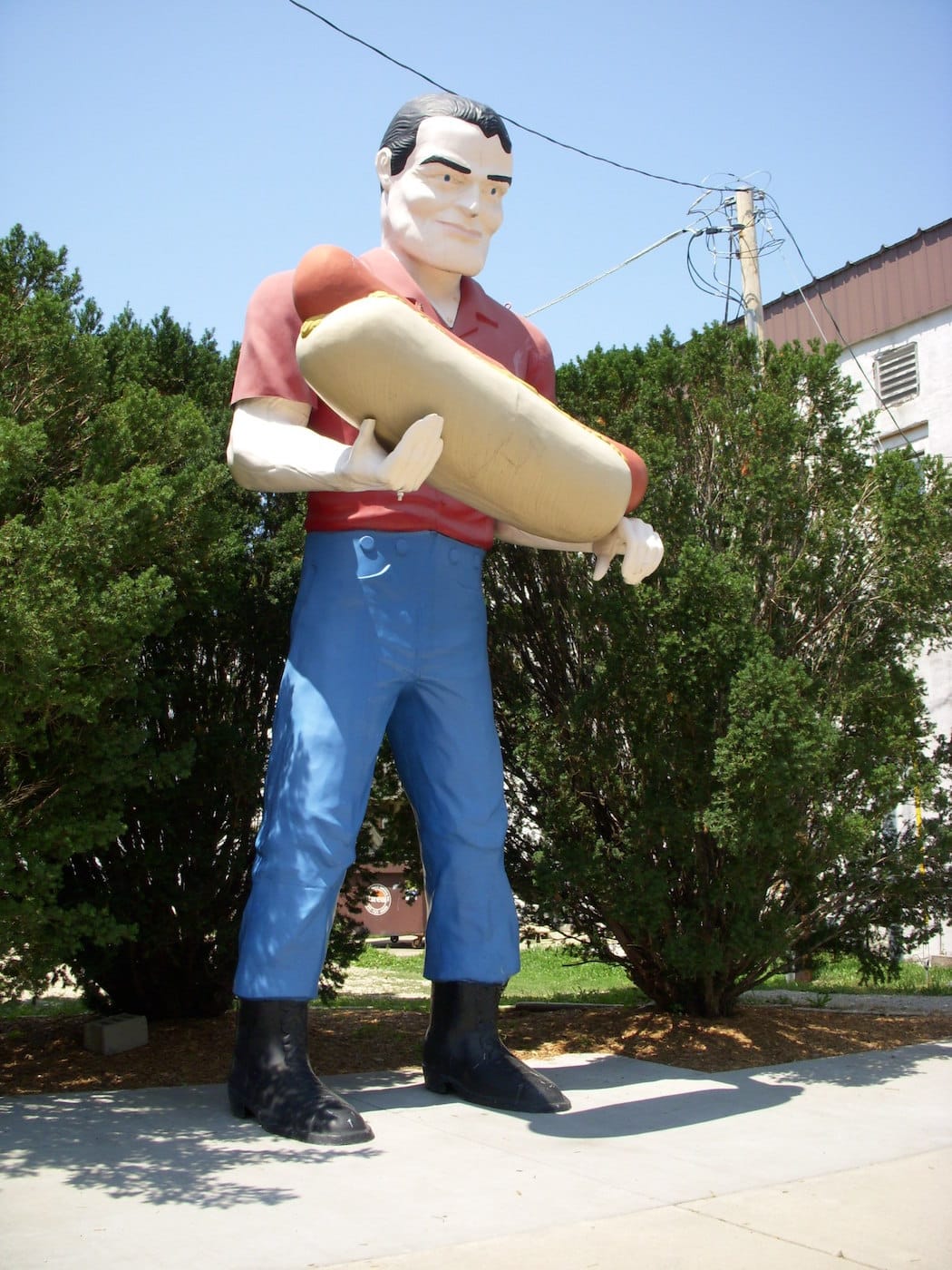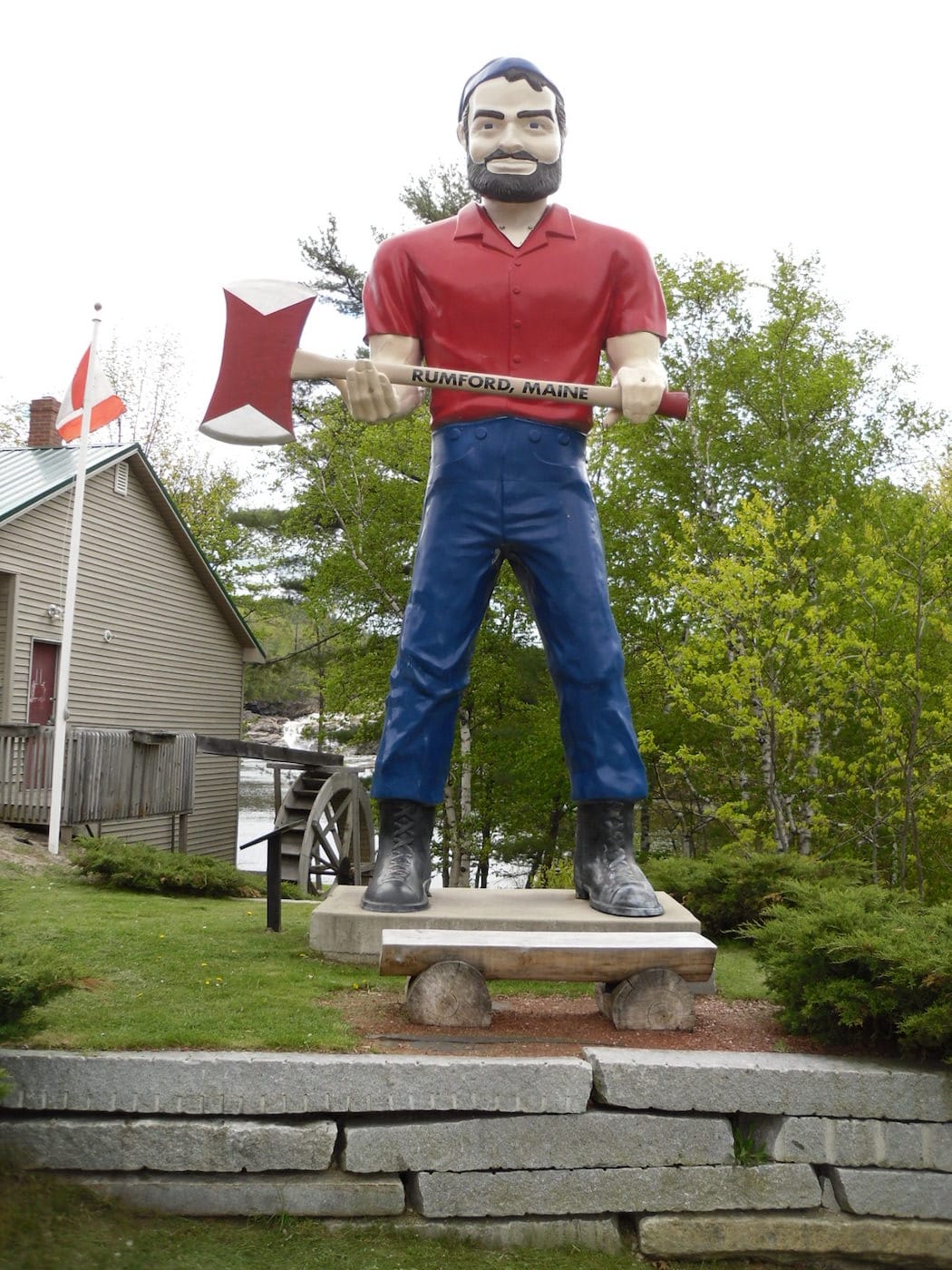Preserving the Muffler Men, America's Fiberglass Giants
The United States was invaded by hundreds of giants in the 1960s and 70s. Over half a century later, those that remain are weathered and decayed, their kitsch out of fashion.
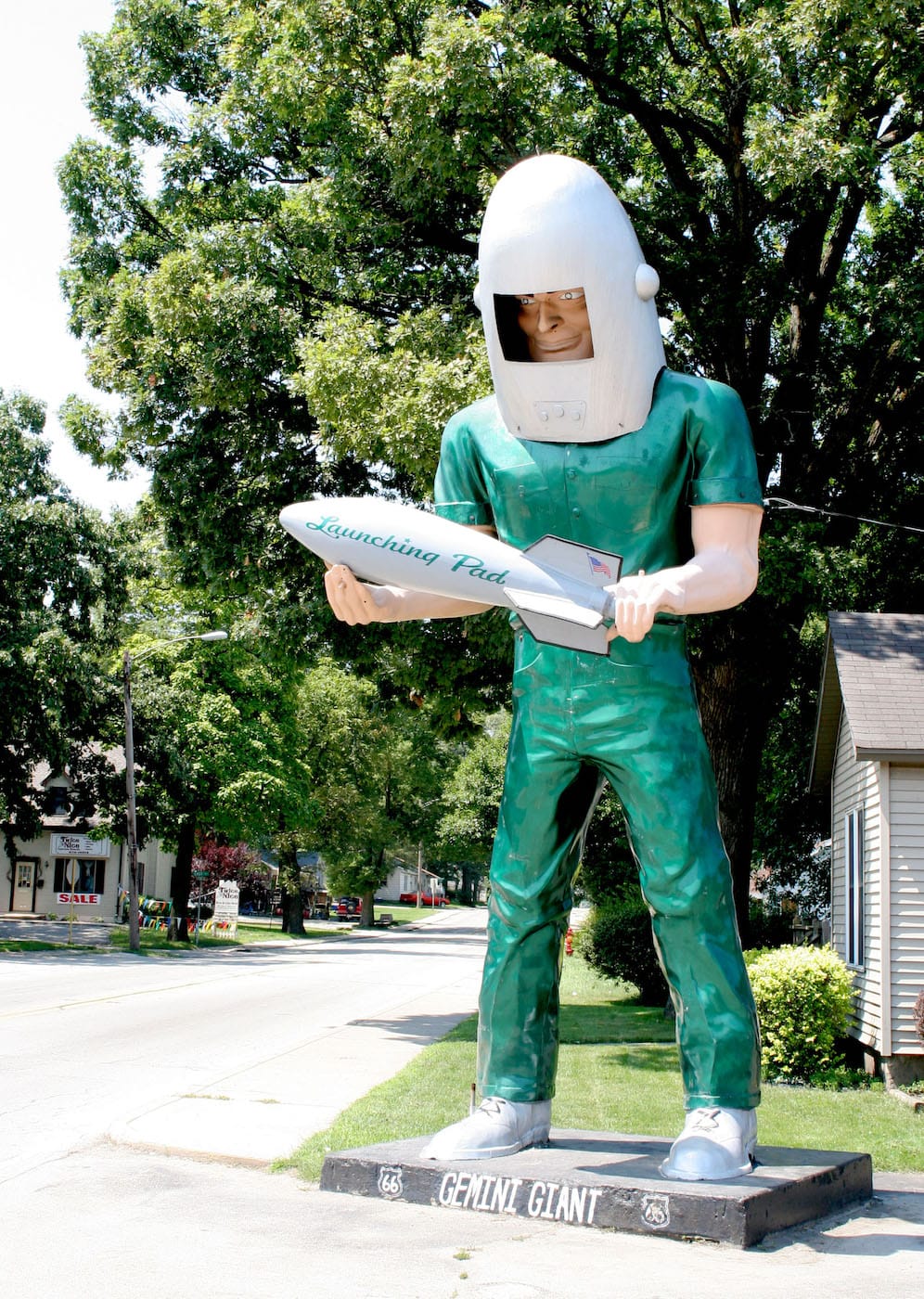
The United States was invaded by hundreds of giants in the 1960s and 70s. Fiberglass Muffler Men standing between 18 and 25 feet tall, wielding car parts, rockets, axes, guns, and gargantuan hot dogs, were installed to draw the business attention of drivers, especially along Route 66. Over half a century later, those that remain are weathered and decayed, their kitsch out of fashion.
Last month Jasmine Taylor-Coleman at BBC News profiled American Giants in Illinois. Started in 2011 by Joel Baker as a hobby to track down surviving Muffler Men, American Giants began to restore fallen giants in 2015, and they opened a shop this year. Their current project is “Chief Bagnell” who once greeted visitors to a defunct tourist destination in Lake Ozark, Missouri. Chief Bagnell, whose Native American stylings rely mostly on stereotype, is one of the cowboys, Paul Bunyans, pirates, and other figures of large-scale Americana familiar in the Muffler Men lexicon. The American Giants team is chronicling the restoration through short video episodes, with the Chief planned for reinstallation this summer.
So why save the Muffler Men, who were initially erected as bombastic advertisement? Muffler Men fans see them as an important part of roadside history, when the availability of cars was propelling more people on road trips, and the highways of the United States became increasingly colorful with attractions and distractions. Even if you see them as nothing but tacky, they’re an incredible example of DIY reuse. Roadside America, the collaborative online guide to offbeat Americana that is attributed with coining the “Muffler Man” name, is the best resource on Muffler Men, including a map of known sightings, and a guide to identification.
The “standard” mould of a Muffler Man has a chiseled face with a steely jaw, no facial hair, and brawny arms that bend forward, with one hand up, one down, to hold whatever ware was being promoted by its owner. Many of these were set up at muffler shops, hence the name, but you can find him as a hardware store employee, chef, golf player, gun-toting cowboy, and Paul Bunyan. The Gemini Giant in Wilmington, Illinois — who is looking for a new owner — is decked out as a spaceman sporting a helmet and cradling an eight-foot rocket. The Muffler Man is a sort of modern Antinous, the Greek youth who Hadrian immortalized as gods from across the pantheon. Definitely not with the same refinement, but with a similar fluidity of faces, and appropriately commercial for our age.
Unsurprisingly, the first Muffler Man made by Bob Prewitt in 1962 was Bunyan, the most gentle of American giants, and his outstretched arms were designed to hold an axe. Steve Dashew bought Prewitt’s company in 1963, establishing International Fiberglass which continued to create standard Muffler Men, and a whole host of fiberglass colossi, including some Muffler Women with the Uniroyal Gals. Eventually, an oil crisis slump caused the business to close in 1976. Chief Bagnell is among these iterations. You can get a glimpse of some of the recent restoration work from American Giants in the video update below:
